|
Home » Raw Herbs » Others |
Acacia senegal (L.) Willd. |
| |
|
|
Botanical Name |
: |
Acacia senegal (L.) Willd. |
English
Name |
: |
Gum Arabic tree |
Synonym(s) |
: |
Acacia rupestris Stokes, Acacia senegal (L.) Willd. ssp. senegalensis (Houtt.) Roberty, Acacia trispniosa Stocks ex Boiss., Acacia veruk Guill. et Perr., Acacia volkii Susseng, Mimosa senegal L |
Family |
: |
Mimosaceae |
| |
General Info
| Description |
 |
|
A deciduous shrub or shrub tree, tree, grows to a height of 20 ft. containing thorns; The branchlets have thorns just below the nodes: either three thorns with the central one hooked downwards and laterals curved upwards, or a single thorn with laterals absent. Leaves are small, grey-green, alternate, and bipinnate. Pinnae occur in (2-)3-8(-12) pairs, and leaflets in 7-25 pairs. The rachis sometimes have prickles. The white or cream colored flowers occur on 2-12 cm long spikes. Pods are dehiscent (open by splitting at maturity), yellowish to brown, flat papery, and oblong (2-19 cm long by 1-3.4 cm wide). Seeds are nearly round to flat olive brown, and 8-12 mm in diameter. |
| Herb Effects |
 |
|
Stimulates the cardiovascular system, antiinflammatory and alleviates spasms (stem bark); emollient, antitussive and demulcent (gum); aphrodisiac, anti-diarrheic, anti-dysenteric, anti-Plaque, anti-gingivitic. |
Chemistry
| Active Ingredients |
 |
|
Ascorbic acid, beta-sitosterol, cysteine, glucuronic acid, kaempferol, octacosanol, quercetin, sucrose, tanin, valine (plant); beta-amyrin, uvaol (bark); gumsarabin and erythrodiol (stem bark); betulin (flower, root). |
| Chemistry
of Active Ingredients |
 |
|
|
 |
Name |
CAS# |
IUPAC Name |
Formula |
Structure |
 |
|
| beta-Amyrin |
559-70-6 |
4,4,6a,6b,8a,11,11,1
4b-octamethyl-1,2,3,
4a,5,6,7,8,9,10,12,1
2a,14,14a-
tetradec
ahydropicen-3-ol |
C30H50O |
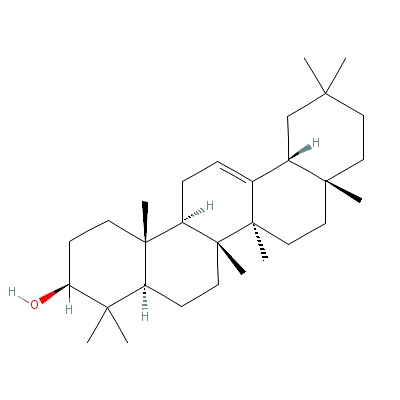
|
| beta-Sitosterol |
5779-62-4 |
17-(5-ethyl-6-methyl
-heptan-2-yl)-10,13-
dimethyl-2,3,4,7,8,9
,11,12,14,
15,16,17
-dodecahydro-1H-cycl
openta[a]phenanthren
-3-ol |
C29H50O |
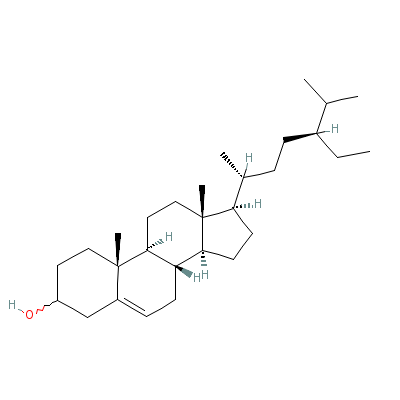
|
| Octacosanol |
67905-27-5 |
Octacosan-1-ol |
C28H58O |
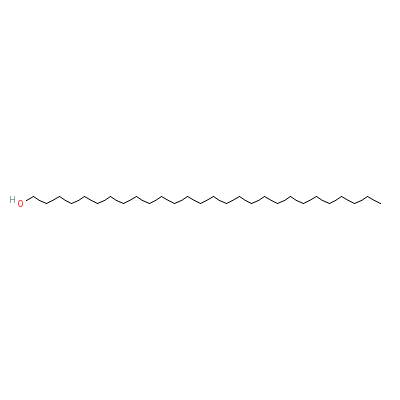
|
| Erythrodiol |
545-48-2 |
8a-(hydroxymethyl)-4
,4,6a,6b,11,11,14b-h
eptamethyl-1,2,3,4a,
5,6,7,8,9,
10,12,12
a,14,14a-tetradecahy
dropicen-3-ol |
C30H50O2 |
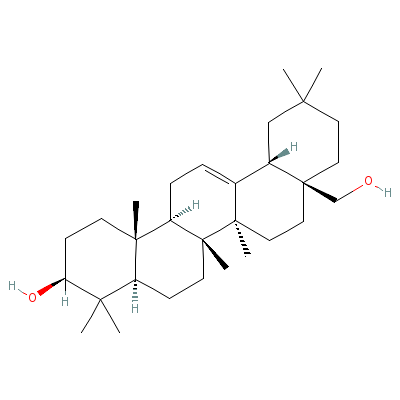
|
| Ascorbic acid |
Not Available |
2-(1,2-dihydroxyethy
l)-4,5-dihydroxy-fur
an-3-one |
C6H8O6 |

|
| Cysteine |
4371-52-2 |
2-amino-3-sulfanyl-p
ropanoic acid |
C3H7NO2S |
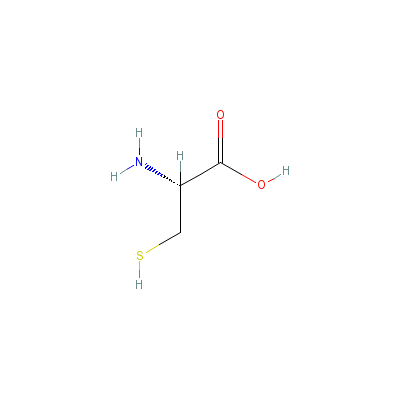
|
| Kaempferol |
80714-53-0 |
3-[3-[4,5-dihydroxy-
6-(hydroxymethyl)-3-
[3,4,5-trihydroxy-6-
(hydroxyme
thyl)oxa
n-2-yl]oxy-oxan-2-yl
]oxy-4,5-dihydroxy-6
-(hydroxymethyl)oxan
-2
-yl]oxy-4,5-dihy
droxy-2-(4-hydroxyph
enyl)-chromen-7-one |
C33H40O21 |
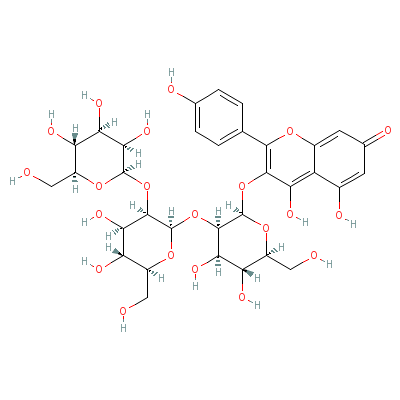
|
| Quercetin |
Not Available |
2-(3,4-dihydroxyphen
yl)-3,4,5-trihydroxy
-chromen-7-one |
C15H10O7 |
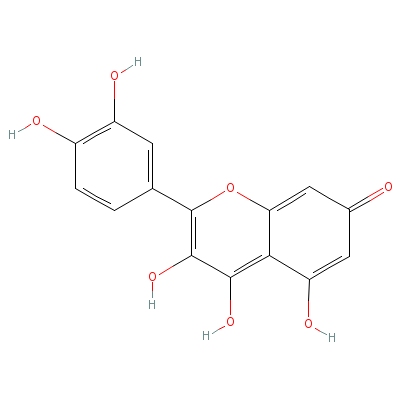
|
| Sucrose |
Not Available |
2-[3,4-dihydroxy-2,5
-bis(hydroxymethyl)o
xolan-2-yl]oxy-6-(hy
droxymethy
l)oxane-
3,4,5-triol |
C12H22O11 |
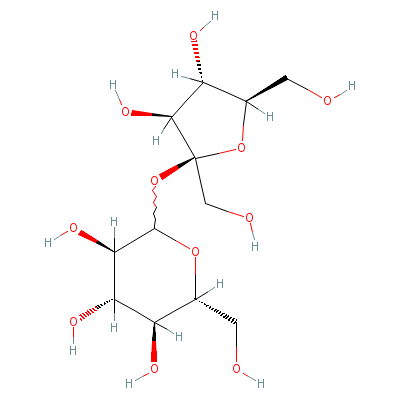
|
| Tannin |
1401-55-4 |
Not Available |
C27H22O18 |
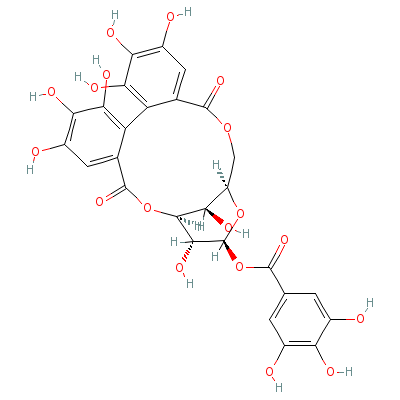
|
| Valine |
7004-03-7 |
2-amino-3-methyl-but
anoic acid |
C5H11NO2 |
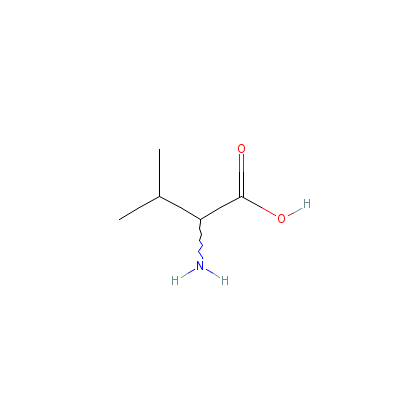
|
| Betulin |
Not Available |
Not Available |
C30H50O2 |
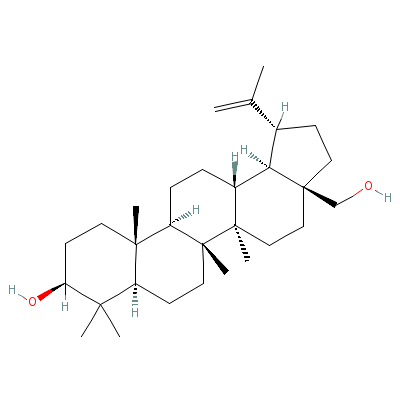
|
| Glucuronic acid |
87246-82-0 |
(2S,3S,4S,5R)-2,3,4,
5-tetrahydroxy-6-oxo
-hexanoic acid |
C6H10O7 |
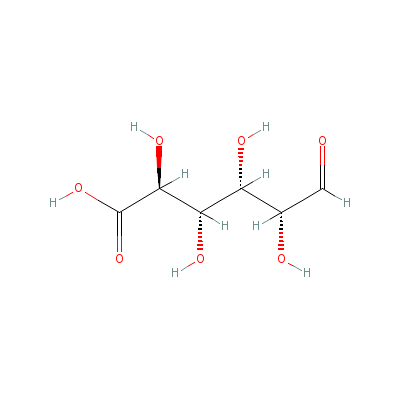
|
| Uvaol |
Not Available |
(3S,6aR,8aS,12S,14bS
)-8a-(hydroxymethyl)
-4,4,6a,6b,11,12,14b
-heptameth
yl-2,3,4
a,5,6,7,8,9,10,11,12
,12a,14,14a-tetradec
ahydro-1H-picen-3-ol |
C30H50O2 |
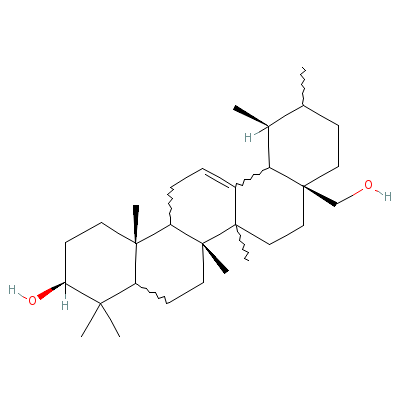
|
|
Pharmacology
| Medicinal Use |
 |
|
Inhibiting bleeding, inflammation of the intestinal area, as an emollient, in cough, burns, sore throat and as a vehicle for other medicines (for example. suspending insoluble powders) (gum); bark, leaves and gum are used to treat gastritic disorders,, haemorrhage, ophtalmia, colds, diarrhoea, gonorrhea, leprosy, typhoid, urinary tract infections and as emollient, antitussive and astringent ; the gum is considered an aphrodisiac. The flowers are relished by honeybees. |
| Reference |
 |
|
 Chandel et al., Biodiversity in Medicinal and Aromatic Plants in India. Chandel et al., Biodiversity in Medicinal and Aromatic Plants in India.
Bentley and Trimen, Medicinal Plants. |
Dealers
Products
|
|
|
|
|